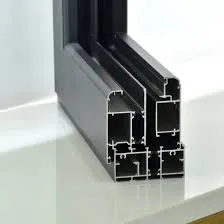Decorative Iron Components for Elegant Home and Garden Designs
The Art of Ornamental Iron Parts A Blend of Strength and Aesthetics
Ornamental iron parts have been a significant aspect of architecture and design for centuries. They not only serve functional purposes but also add an artistic flair to various structures. This traditional craft showcases the extraordinary skill of artisans who transform raw iron into stunning decorative pieces. In this article, we will explore the history, design elements, manufacturing processes, and contemporary applications of ornamental iron parts.
Historical Background
The use of iron in decorative applications can be traced back to ancient civilizations. In Roman times, blacksmiths created ornate fixtures for temples and public buildings, setting a precedent for the embellishment of architecture. The medieval era saw an explosion of ornamental ironwork, particularly in gates, railings, and window grilles, which often featured intricate designs and motifs depicting nature, religious symbols, or heraldic emblems.
The Renaissance further advanced ornamental ironwork, as artisans sought to blend functionality with beauty. This period was marked by the introduction of new techniques that allowed for more elaborate and complex designs. The Baroque and Rococo movements continued this trend, emphasizing ornate details and opulent aesthetics. Today, ornamental iron parts continue to be cherished for their beauty, resilience, and versatility.
Designing Ornamental Iron Parts
Designing ornamental iron parts requires a keen eye for detail and a deep understanding of both engineering and art
. Designers often draw inspiration from various sources, including nature, historical motifs, and contemporary trends. The design process typically involves several steps1. Conceptualization Designers brainstorm ideas and sketch preliminary designs, considering how the piece will integrate with its surrounding environment. 2. Material Selection The choice of iron and its finishing treatments is crucial. Options include wrought iron, cast iron, and powder-coated finishes to enhance durability and aesthetics. 3. CAD Modeling Advanced software tools allow designers to create precise digital models, enabling them to visualize the final product before fabrication. 4. Prototyping In many cases, a prototype is created to test the design's feasibility, functionality, and visual appeal.
ornamental iron parts

Manufacturing Process
The manufacturing of ornamental iron parts involves a combination of traditional techniques and modern technology. The process generally includes
1. Cutting and Shaping Iron is cut to size using various tools, including plasma cutters, lasers, and traditional saws. The pieces are then shaped using hammers or presses to create the desired forms. 2. Welding and Assembly Components are welded together using skilled techniques that ensure not only strength but also aesthetic quality. The welding process often requires meticulous attention to detail to ensure that seams are neat and unobtrusive. 3. Finishing Touches Once assembled, the ironwork is often sandblasted, primed, and painted or coated to prevent rust and enhance appearance. Decorative elements such as scrollwork or filigree are added at this stage.
Contemporary Applications
Today, ornamental iron parts can be found in a myriad of applications ranging from residential to commercial. Common uses include
- Gates and Fences Ornamental iron gates and fences provide security while serving as statement pieces that enhance property aesthetics. - Railings and Balconies Decorative railings on staircases or balconies add elegance and character to buildings. - Architectural Features Ornamental iron can be used in facade designs, window grilles, and architectural accents, showcasing creativity and craftsmanship. - Furniture and Decor Designers are increasingly incorporating ornamental iron parts into furniture, lighting fixtures, and decorative accessories, blending function with art.
Conclusion
Ornamental iron parts represent a perfect synthesis of strength and beauty, embodying a long tradition of craftsmanship. As we continue to appreciate the elegance of these designs, they will undoubtedly remain a vital part of our architectural landscape, bridging the past with the present. Whether in grand estates, urban settings, or quaint homes, ornamental ironwork serves as a testament to the enduring allure of artistic ingenuity and practical design.
-
Wrought Iron Components: Timeless Elegance and Structural StrengthNewsJul.28,2025
-
Window Hardware Essentials: Rollers, Handles, and Locking SolutionsNewsJul.28,2025
-
Small Agricultural Processing Machines: Corn Threshers, Cassava Chippers, Grain Peelers & Chaff CuttersNewsJul.28,2025
-
Sliding Rollers: Smooth, Silent, and Built to LastNewsJul.28,2025
-
Cast Iron Stoves: Timeless Heating with Modern EfficiencyNewsJul.28,2025
-
Cast Iron Pipe and Fitting: Durable, Fire-Resistant Solutions for Plumbing and DrainageNewsJul.28,2025
-
 Wrought Iron Components: Timeless Elegance and Structural StrengthJul-28-2025Wrought Iron Components: Timeless Elegance and Structural Strength
Wrought Iron Components: Timeless Elegance and Structural StrengthJul-28-2025Wrought Iron Components: Timeless Elegance and Structural Strength -
 Window Hardware Essentials: Rollers, Handles, and Locking SolutionsJul-28-2025Window Hardware Essentials: Rollers, Handles, and Locking Solutions
Window Hardware Essentials: Rollers, Handles, and Locking SolutionsJul-28-2025Window Hardware Essentials: Rollers, Handles, and Locking Solutions -
 Small Agricultural Processing Machines: Corn Threshers, Cassava Chippers, Grain Peelers & Chaff CuttersJul-28-2025Small Agricultural Processing Machines: Corn Threshers, Cassava Chippers, Grain Peelers & Chaff Cutters
Small Agricultural Processing Machines: Corn Threshers, Cassava Chippers, Grain Peelers & Chaff CuttersJul-28-2025Small Agricultural Processing Machines: Corn Threshers, Cassava Chippers, Grain Peelers & Chaff Cutters












